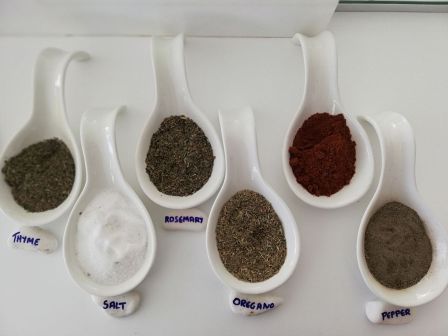Every spice has its own unique identity, color, and aroma, as well as a range of beneficial properties that have been documented through centuries of use. Let's explore some of the most common and beloved spices, their uses, and their health benefits.
Cinnamon: Known for its warm, sweet flavor and as a natural hypoglycemic agent, cinnamon adds depth to sweets, warm drinks, and even some savory dishes.
Clove: With a strong aroma and spicy flavor, clove is used in meats, sauces, sweets, and as a potent antiseptic and analgesic.
Red pepper: Brings a strong and invigorating heat to any dish, enhancing circulation and digestion.
White pepper: More subtle in flavor than black pepper, it's often used in white sauces and soups, offering a distinct but characteristic aromatic profile.
Black pepper: A staple in every kitchen, black pepper adds depth and spicy flavor to many dishes, while also being beneficial for digestion.
Pink pepper: With a sweet, fruity flavor and a slightly spicy finish, pink pepper adds exotic color and an aromatic note to salads and sauces.
Nutmeg: With its rich, sweet flavor, nutmeg is ideal for creams and desserts, as well as spicy savory dishes. It's also believed to have calming properties.
Turmeric: This valuable root is known for its anti-inflammatory actions and is frequently used in curries and other Asian dishes, imparting a vibrant yellow color.
Ginger: With its warm and spicy flavor, ginger is excellent for digestion and has a soothing effect on cold symptoms.
Cardamom: Cardamom adds a distinct sweet and aromatic flavor to sweets and beverages and is considered to help relieve stress.
Mahleb: With its fruity and tangy flavor, mahleb is used in sweets and is a traditional spice in many Middle Eastern regions.
Chili: Offers an intense heat and boosts circulation and metabolism, adding a fiery power to any recipe it's used in.
Paprika: With its mild smoky flavor and vibrant red color, paprika is perfect for adding depth to stews, sauces, and side dishes.
Curry: A blend of spices that offers a rich array of flavors, curry is central to Asian cuisine and known for its anti-inflammatory properties.
Coriander: Both the leaves and seeds of coriander are used to add a fresh, slightly bitter taste to dishes and sauces.
Allspice: Allspice has a strong, spicy aroma and flavor and is often paired with meats and sweets.
Saffron: The most expensive spice in the world, saffron offers a complex aroma and a delicate flavor to risotto, paella, and other dishes.
Sumac: With its slightly sour and aromatic flavor, sumac adds an interesting element to salads and meats.
Cumin: With a strong, spicy aroma, cumin is central to Mexican, Indian, and Mediterranean cuisine.
Cayenne: This hot spice can boost metabolism and add an intense heat to dishes.
These spices truly are the "magic wand," offering a world of flavors and aromas. Their use in a balanced diet helps us maintain our health and wellbeing, while simultaneously discovering the rich heritage of flavors provided by the earth.
LATEST RECIPES
GET LATEST UPDATES
Newsletter Subscribe
FEATURED ARTICLE

GET LATEST UPDATES
Newsletter Subscribe





























































































